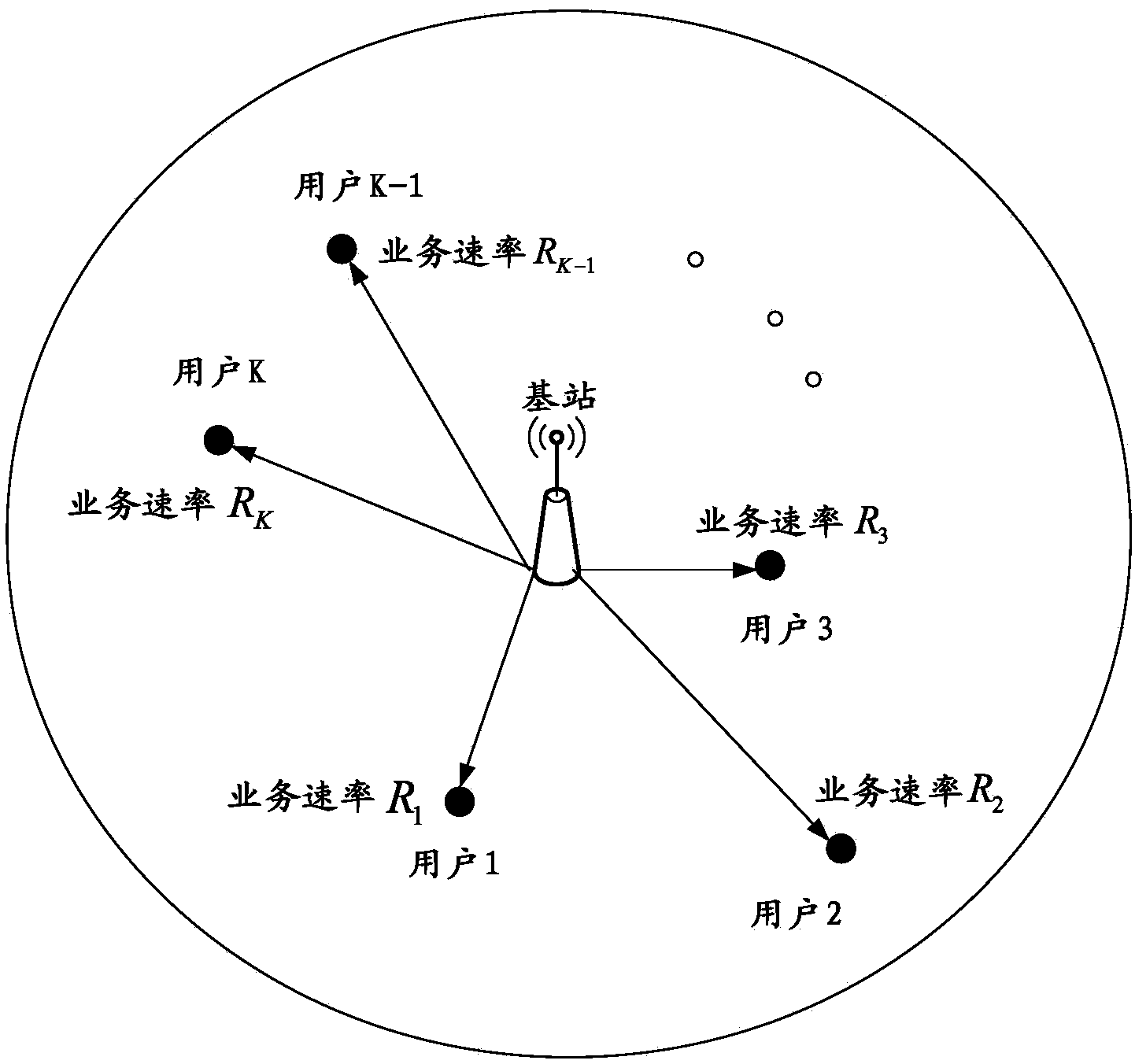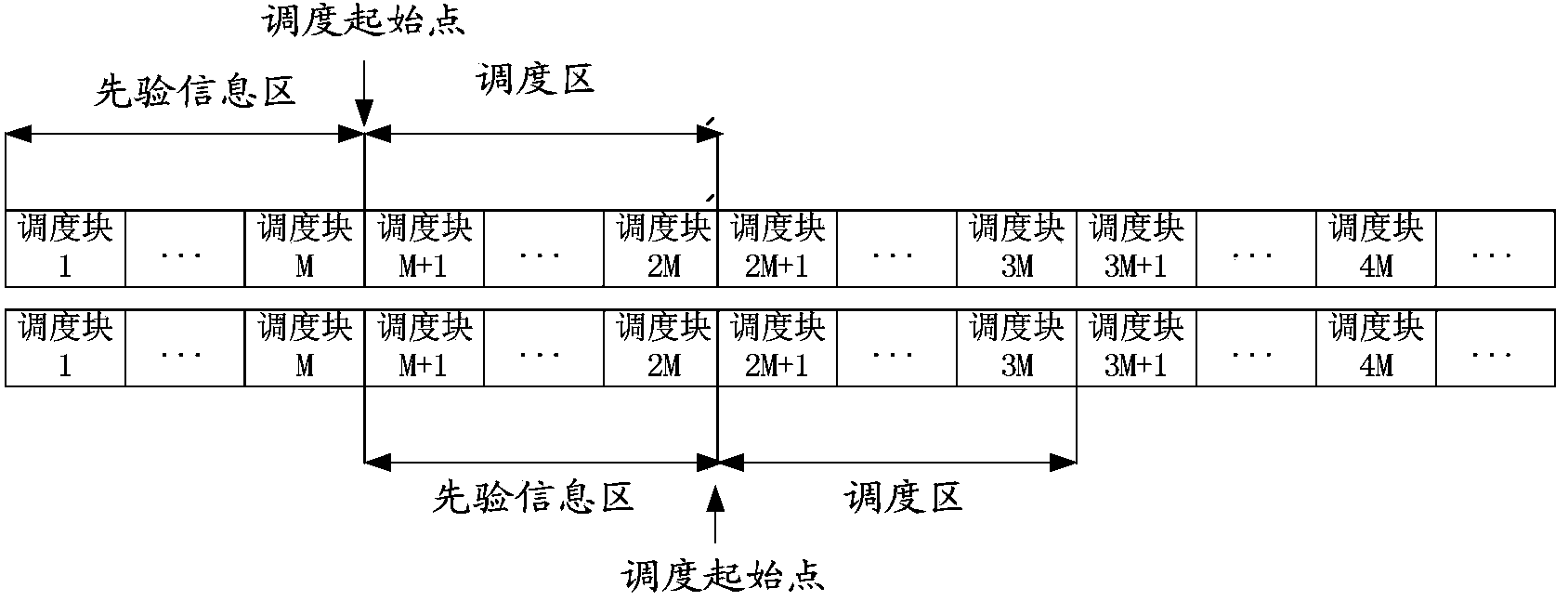Downlink channel according-to-requirement method for aiming at single-carrier base station system
A base station system, on-demand allocation technology, applied in wireless communication, electrical components, etc., can solve the problem of inability to efficiently support multi-user different service rate requirements, and achieve good downlink throughput.
- Summary
- Abstract
- Description
- Claims
- Application Information
AI Technical Summary
Problems solved by technology
Method used
Image
Examples
Embodiment 1
[0060] The method for allocating downlink channels on demand in this embodiment specifically includes the following steps:
[0061] 1) Let the bandwidth of the single-carrier base station system be BHz, and the signal transmission power be P max , the channel state information (CSI) of the user can be obtained in real time, and the number is N=2 k ); the base station system is the basic scheduling block of T at each time (such as figure 1 As shown, only one user’s data is transmitted, including X=T / B modulation symbols) using adaptive modulation and coding technology, and applying different modulation and coding schemes (MCS, a total of N schemes, rate followed by r 1 , r 2 ,...,r N-1 , r N bits) for maximum transmission efficiency;
[0062] Assuming that within a certain period of time, the base station needs to support the downlink service requirements of K users who are evenly distributed in the cell and are in a static or low-speed mobile state, such as figure 2 As...
PUM
 Login to View More
Login to View More Abstract
Description
Claims
Application Information
 Login to View More
Login to View More - R&D
- Intellectual Property
- Life Sciences
- Materials
- Tech Scout
- Unparalleled Data Quality
- Higher Quality Content
- 60% Fewer Hallucinations
Browse by: Latest US Patents, China's latest patents, Technical Efficacy Thesaurus, Application Domain, Technology Topic, Popular Technical Reports.
© 2025 PatSnap. All rights reserved.Legal|Privacy policy|Modern Slavery Act Transparency Statement|Sitemap|About US| Contact US: help@patsnap.com



